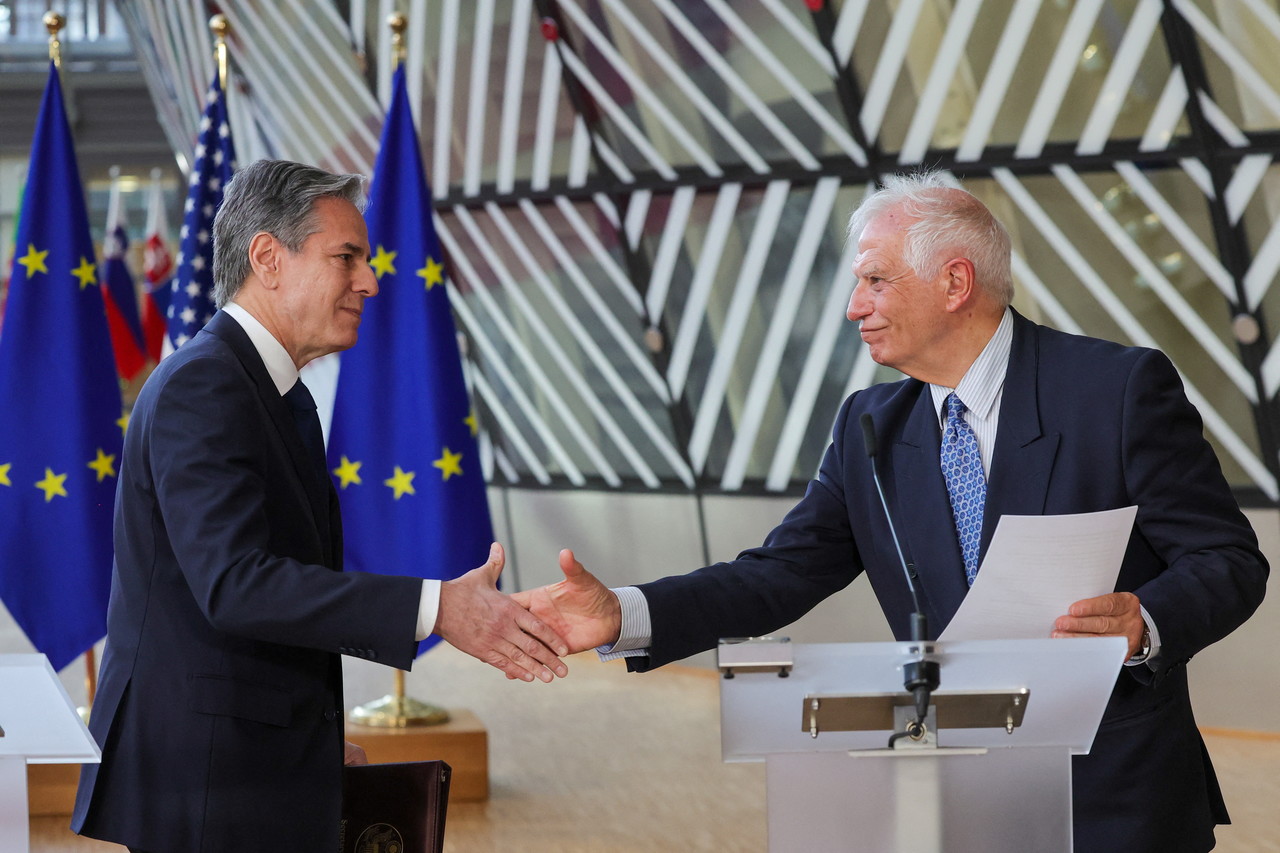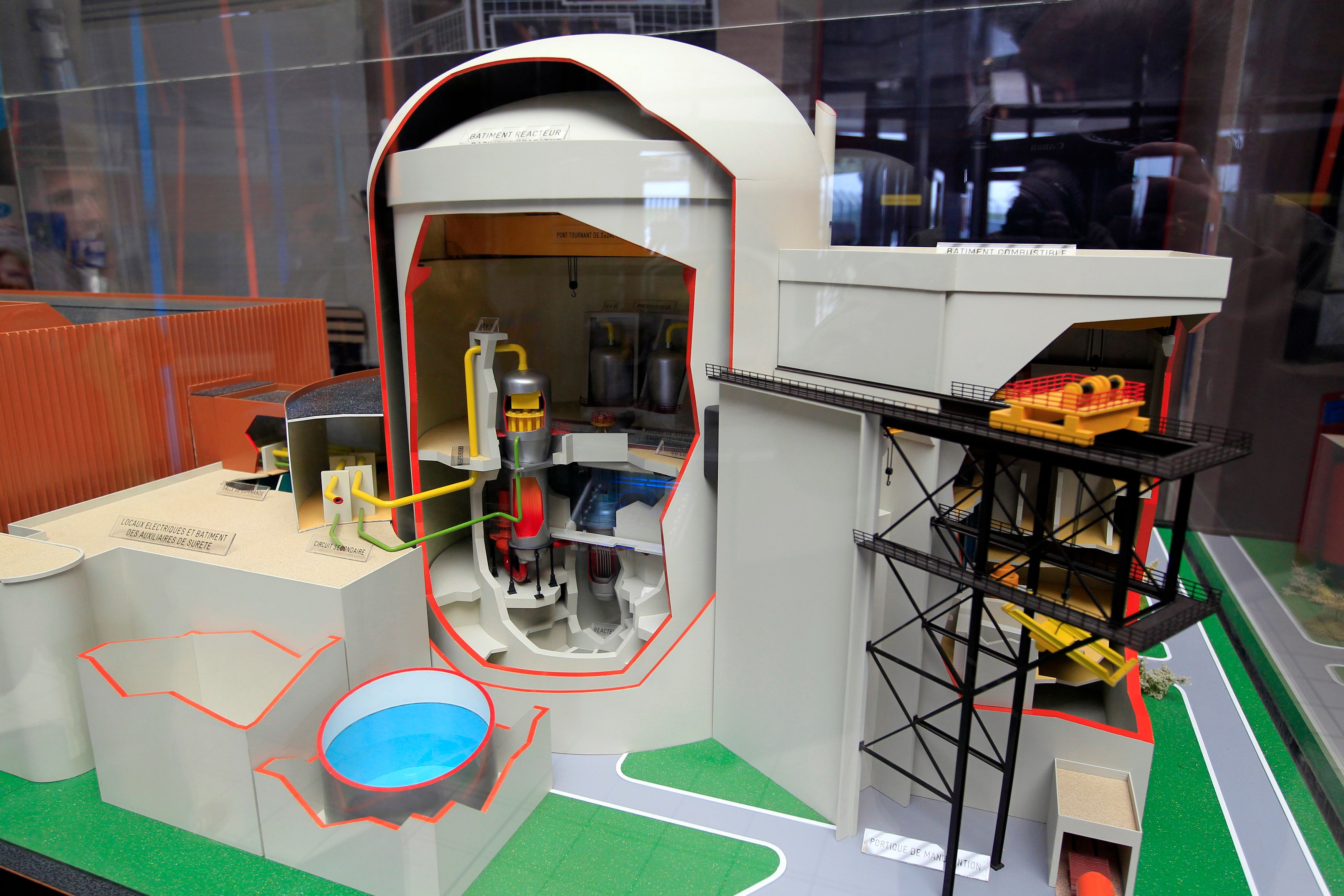EU Responds to Transatlantic Competition in Green Technologies
The U.S. Inflation Reduction Act challenges the competitiveness of the European green technology sector. The European Commission (EC), through its Green Deal industrial plan, proposes to increase the production capacity of European industry by simplifying regulatory rules, accelerating access to finance, and other initiatives. The EU also aims to reduce its dependence on Chinese raw materials. An obstacle, though, is in the need to reconcile the differences between the Member States as to the direction of further EC actions, for example, in terms of financing the plan.
 POOL / Reuters / Forum
POOL / Reuters / Forum
IRA Goals and Consequences for the EU
The Inflation Reduction Act (IRA) allocated $369 billion to develop a home-grown “green” technology sector and related jobs. In addition to increasing the competitiveness of the U.S. economy, it is also intended to limit China’s position in the green technology market, and as such is an element of the U.S.-China strategic rivalry.
On the one hand, the EU welcomed the renewed U.S. focus—as the world’s second-largest CO2 emitter—to undertake ambitious climate policy. On the other hand, the EU opposes IRA stipulations offering subsidies only to companies operating mainly or wholly in the U.S., seeing it as protectionism. According to the act, financial support is available to, among others, the producers of batteries for electric vehicles (EV). About 40% of the critical minerals used in the production of these batteries is mined or processed in countries that have free trade agreements with the U.S. This is expected to increase to 80% by 2027 (in scenarios excluding, for example, EU batteries). Additionally, producers of battery components from Canada or Mexico will be eligible for support.
The EU’s Response to the IRA
The industrial policy of EU competitors (mainly the U.S. and China) and forecasts of growth of the global green technology market led to EC President Ursula von der Leyen announcing in December 2022 that the EU would offer a structural response. In February, the EC presented the Green Deal industrial plan, which aims to provide a simplified regulatory environment, accelerated access to finance, training to enhance workers’ skills, and open trade for resilient supply chains. The plan consists of draft regulations, including the Net Zero Industry Act and Critical Raw Materials Act, as well as a proposal to reform the structure of the electricity market. In addition, the EC agreed with the Member States to extend the Temporary Crisis and Transition Framework, which enables Member States to use the flexibility foreseen under EU state-aid rules to support the national economies.
The Net Zero Industry Act sets a target for the EU to produce at least 40% of its needs in eight strategic technologies by 2030. These include solar photovoltaic and thermal technologies, renewable onshore and offshore wind energy, batteries and storage, heat pumps and geothermal energy, electrolysers and fuel cells, biogas and biomethane, carbon capture, utilisation and storage, and grid technologies. For example, the EU currently produces only about 10% of the solar panels installed across its members. France and Poland had insisted on nuclear energy, but it was not included in the annex listing strategic technologies. Only advanced technologies to produce energy from nuclear processes with minimal waste from the fuel cycle and small modular reactors (SMR) can count on limited EU support.
Reducing Chinese Market Dominance
To meet the production target, the EU will need more independence in acquiring key critical raw materials. For example, China now provides, among others, 98% of the rare earth elements used in the EU, 93% of the magnesium, and 97% of the lithium. By 2050, the demand for lithium for EV batteries is expected to increase 17-fold in the EU alone. In this context, the Critical Raw Materials Act intends to diversify and secure supply of this metal. By 2030, the EU aims for at least 10% though extraction, 40% via processing, and 15% by recycling of its annual consumption of the strategic raw materials specified in the regulation. Until then, the EU’s dependence on third countries is not to exceed 65% for any strategic raw material at any stage of processing.
The regulation also wants to simplify administrative procedures, for example, by shortening the deadlines for issuing mining permits to 24 months and processing and recycling permits to 12 months. It also seeks to strengthen cooperation within the so-called critical raw materials club, which will bring together the G7 countries, producer countries (e.g., Chile and Australia), and consumers to encourage investment and knowledge-sharing. Negotiations are currently underway between the EU and the U.S. for a Critical Minerals Agreement that would qualify certain EU-mined or processed materials for IRA subsidies.
Challenges and Threats
EU members differ on the direction they should take in responding to the IRA. Supporters of a symmetrical answer (e.g., France) want to support the European industrial base through increased funding. Opponents of the fragmentation of the EU single market (e.g., Sweden and Central European countries) strive to maintain a level playing field and competition.
EU countries also have different opinions on making state aid rules more flexible. The main beneficiaries of such solutions will be Germany and France (recipients of nearly 80% of the value of state aid approved by the EC since the start of the COVID-19 pandemic), while smaller countries are afraid of a subsidy “arms race” from their perspective. In March 2023, once again, since the outbreak of the pandemic and the war in Ukraine, the EC has relaxed the rules for granting state aid, allowing EU members to subsidise projects in line with the objectives of the Green Deal industrial plan. Under the new regulations, the Member States will be able, under certain conditions, to match subsidies to those offered by third countries if there is a justified risk of investments being redirected from Europe. In addition, the EC has reviewed the General Block Exemption Regulation (GEBR) to consider key low-carbon sectors, such as the hydrogen and electric vehicle industries, as eligible for state aid without the need to notify the EC.
The Commission’s plan does not provide for new funding, relying on existing EU instruments and national budgets. At the same time, the EC considers the current EU budget in this area insufficient. It estimates that additional investments of €92 billion are needed in 2023-2030, of which public aid could amount to €16-18 billion. The problem still is that even this is only a small part of the much larger needs related to the green transition and the REPowerEU plan, which the EC set at, respectively, €477 billion per year in 2021-2030 and €35 billion per year in 2022-2027. Thus, the scope to reallocate some of the available EU funds is limited. However, the EC’s idea to increase access to financing by establishing a European Sovereignty Fund, which would reuse the joint debt mechanism, has divided the Member States. The discussion on this subject resume in July when the review of the EU’s long-term budget will take place.
Conclusions and Recommendations
The growing importance of the green technology sector has prompted the U.S. and the EU to increase support for their own industries. However, the EU should not imitate the U.S. solutions, such as further easing subsidy rules, as this may lead to inequalities between European economies. It should first look for opportunities to introduce structural solutions, especially by facilitating business operations (e.g., issuing more permits and more quickly) and access to existing funds.
The U.S. and the EU are trying to increase their industrial bases and access to critical raw materials to reduce their dependence on China. As President von der Leyen stated in her March speech on EU-China relations, decoupling fully from China is not feasible, and therefore the EU should focus on lowering the risk of dependence on Chinese raw materials. At the same time, it would be worthwhile for the EU to work out an agreement with the U.S. that would allow European producers to qualify for at least partial subsidies under the IRA. The EU and the U.S. should also work more closely on common rules reducing China’s influence on international standards. From Poland’s perspective, it is crucial to maintain a level playing field in the EU single market while developing the green technology industry. A subsidies arms race within the EU and between it and the U.S. would be inefficient and costly, and therefore unfavourable to the smaller economies of the EU, including Poland’s.


.png)


